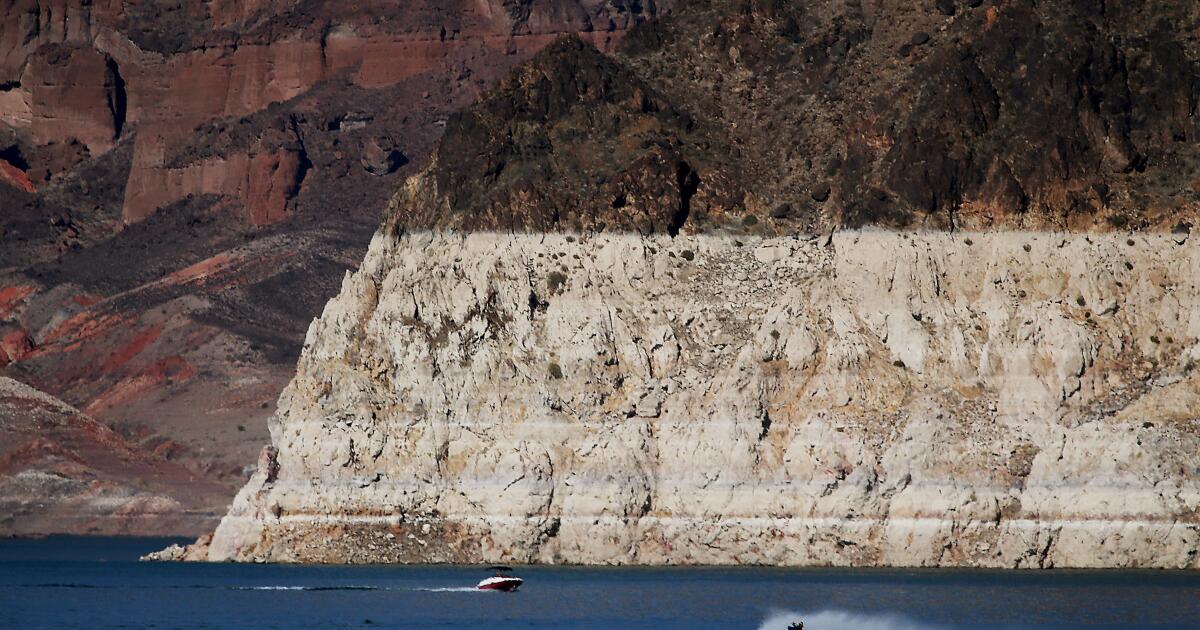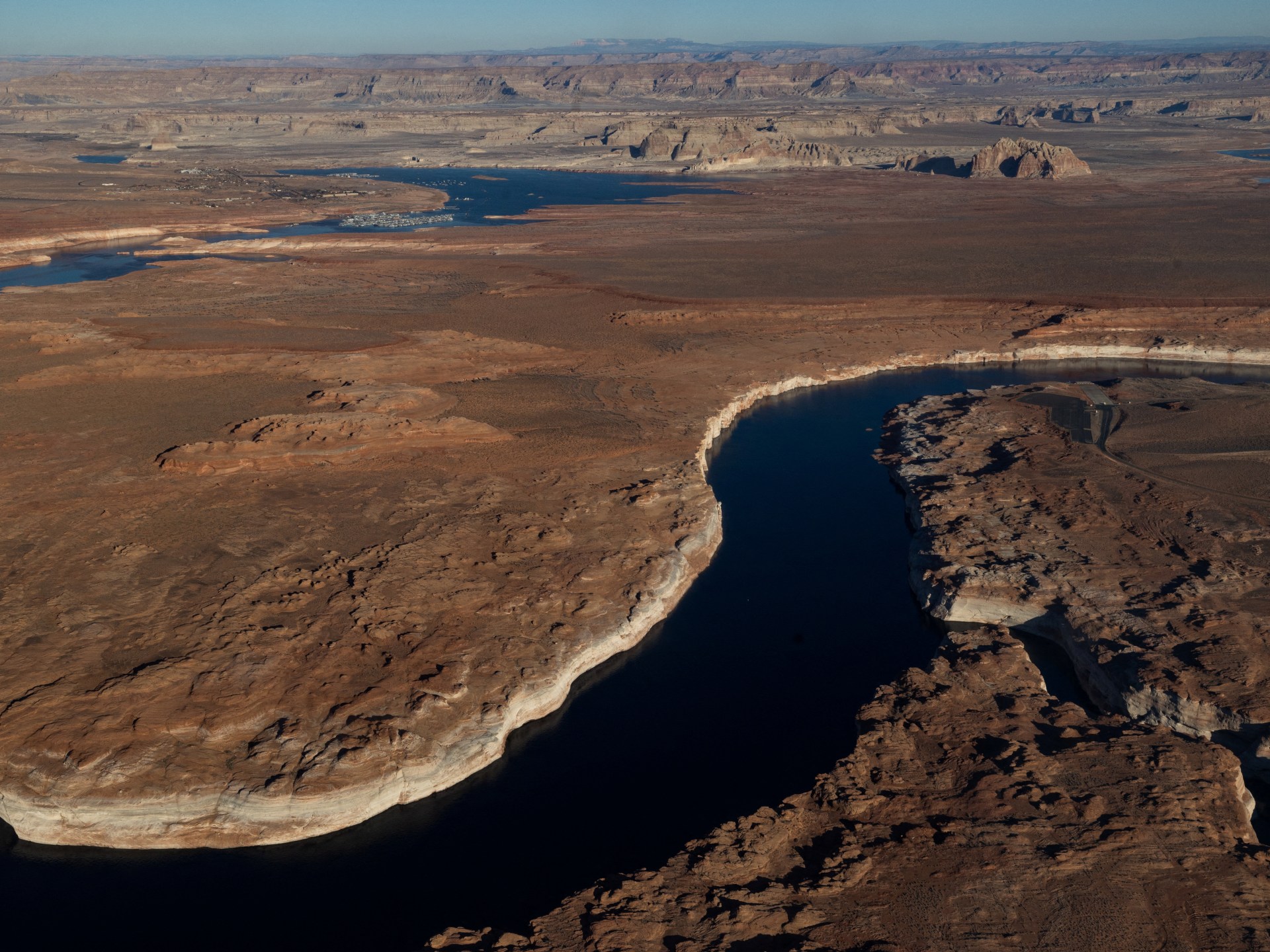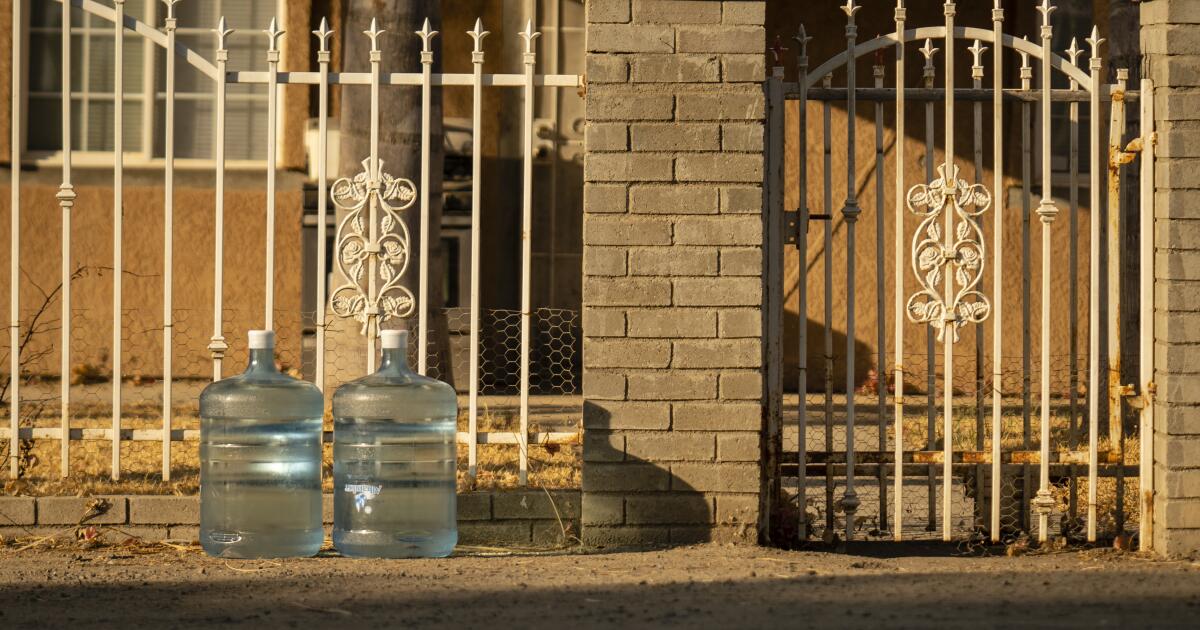
US West faces reckoning over water but avoids cuts for now
Associated PressCARSON CITY, Nev. — The white rings that wrap around two massive lakes in the U.S. West are a stark reminder of how water levels are dropping and a warning that the 40 million people who rely on the Colorado River face a much drier future. “But people certainly ought to be aware that water — the importation of a scarce commodity into a desert environment — is expensive and, with climate change, going to get even more expensive.” The Colorado River supplies Arizona, California, Nevada, Colorado, New Mexico, Utah, Wyoming and Mexico. Last year, with increasingly less water flowing to Lake Mead and Lake Powell — the two largest man-made reservoirs in the United States — Arizona, California and Nevada agreed to a drought contingency plan that built in voluntary cuts to prevent the reservoirs from dropping to dangerous levels. Lake Mead’s expected level of 1,089 feet is almost identical to last year’s projections because conservation efforts and a snowy winter prevented an expected drop, said Michael Bernardo, Bureau of Reclamation river operations manager. All the climate models and the current drought suggest that,” said Colby Pellegrino, Southern Nevada Water Authority’s deputy general manager of resources.
History of this topic

Letters to the Editor: It’s time to build a water pipeline to supply the Colorado River
LA TimesArizona, Nevada and Mexico will lose same amount of Colorado River water next year as in 2024
Associated PressAs Colorado River states await water cuts, they struggle to find agreement on longer-term plans
Associated Press
‘We can do better’: Western states divided over long-term plans for Colorado River water
LA Times
As a deadline approaches, Colorado River states are still far apart on water sharing
NPRFederal officials say plan for water cuts from 3 Western states is enough to protect Colorado River
Associated PressWestern states will not lose as much Colorado River water in 2024, despite long-term challenges
Associated Press
10 trillion gallons of water lost in Colorado River Basin due to rising temperatures: Report
Hindustan Times
Here’s how much Lake Mead could rise after an epic winter and new water cuts
CNN
Explainer: What does the latest Colorado River proposal mean for California, Arizona, Nevada?
Associated Press
Explainer: What does the latest Colorado River proposal mean for California, Arizona, Nevada?
The Independent
Breakthrough proposal would aid drought-stricken Colorado River as 3 Western states offer cuts
Associated Press
Editorial: Colorado River water deal gives California another reprieve. For now
LA Times
Arizona, California and Nevada propose water cuts from Colorado River to avert forced cuts
The Independent
Half of US West out of drought, but not fully recovered
The Independent
Half of US West out of drought, but not fully recovered
Associated Press
US floats options to reduce water pulled from Colorado River
Associated Press
Tribe, US officials reach deal to save Colorado River water
Associated Press
Tribe, US officials reach deal to save Colorado River water
The Independent
Why California is so far apart from other states in Colorado River water cuts plan
LA Times
Colorado River crisis is so bad, lakes Mead and Powell are unlikely to refill in our lifetimes
LA Times
At the heart of Colorado River crisis, the mighty ‘Law of the River’ holds sway
LA Times
California is alone in battle over Colorado River water cuts
LA Times
California releases its own plan for Colorado River cuts
Associated Press
Battling to avoid massive water cuts, California offers proposal on Colorado River crisis
LA Times
US states propose Colorado River cuts, California lone holdout
Al Jazeera
States miss deadline to address Colorado River water crisis; pressure builds on California
LA Times
The West’s snow boom could ease the water crisis. But experts worry more hot, dry weather is coming
CNN
The Times podcast: Colorado River in Crisis, Part 1: A Dying River
LA Times
Federal officials say urgent action needed to protect shrinking Colorado River reservoirs
LA Times
Growing fears of ‘dead pool’ on Colorado River as drought threatens Hoover Dam water
LA Times
Drying California lake to get $250M in US drought funding
Associated Press
Feds to Colorado River states: reduce water usage, or we will do it for you
Salon
New US plan could lead to federal action on Colorado River
Associated Press
In Arizona, worry about access to Colorado River water
Associated Press
Crisis looms without big cuts to over-tapped Colorado River
Associated Press
Drought in the US: Water Supply Cut for States Colorado, Arizona; Mexico’s Quota Reduced
News 18
Western states hit with more cuts to Colorado River water
Associated Press
US states hit by extreme drought face more water cuts
Al Jazeera
Deadline looms for western states to cut Colorado River use
Associated Press
Severe drought at US’s largest reservoir revealed through the decades by Nasa satellite images
The Independent
Governor signs $1.2B water plan as Arizona faces cutbacks
Associated Press
As water crisis worsens on Colorado River, an urgent call for Western states to ‘act now’
LA Times
Major water cutbacks loom as shrinking Colorado River nears ‘moment of reckoning’
LA Times
Tucson may forego some water to help keep Lake Mead level up
Associated Press
Water shortages on Colorado River could eventually hit California, Arizona warns
LA Times
US to hold back Lake Powell water to protect hydropower
Associated Press
As drought crisis deepens, government will release less water from Colorado River reservoir
LA Times
Lake Powell officials take emergency steps to preserve hydropower from Glen Canyon Dam
CNN
Vegas water intake now visible at drought-stricken Lake Mead
Associated PressDiscover Related

































